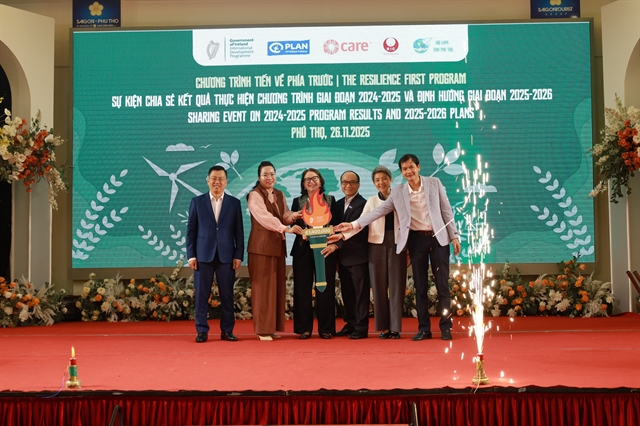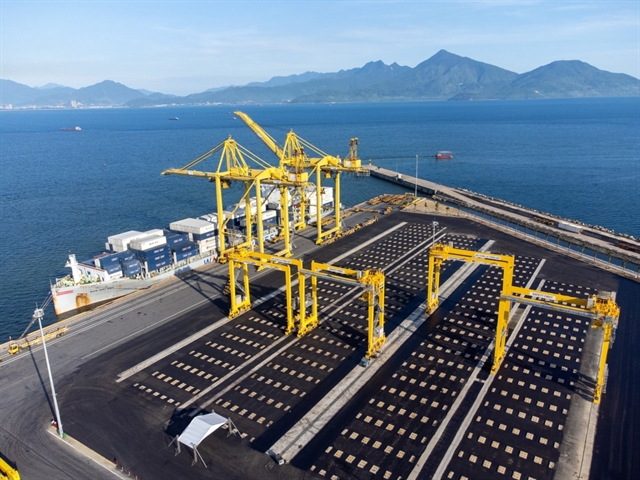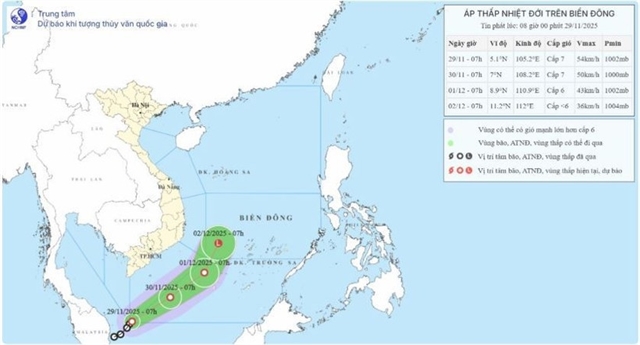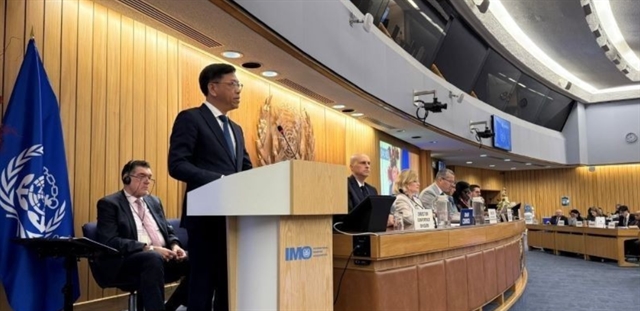 Society
Society

 |
| Border guards clean up damaged belongings due to the typhoon in Hà Tĩnh Province.—VNA/VNS Photo Hữu Quyết |
HÀ NỘI — Prime Minister Phạm Minh Chính issued an official dispatch late Tuesday, calling for rapid recovery from Typhoon Kajiki and subsequent flooding that has left seven dead and dozens injured, and caused widespread devastation across northern and central regions.
The document stated that the typhoon brought fierce winds of levels 6-8, with gusts reaching level 9, while areas near the typhoon's eye experienced wind speeds of up to level 10 and gust reaching level 15.
According to the Ministry of Agriculture and Environment’s data, as of 3pm on the day, the typhoon along with floodings in the aftermath has left seven people dead, one missing, and 34 others injured.
The infrastructure damage was extensive, with 15 houses completely destroyed and nearly 8,800 homes, 63 schools, and 8 health facilities unroofed.
More than 3,600 houses were submerged, thousands of hectares of crops were inundated, and livestock losses neared 2,000.
The storm's fury felled nearly 21,000 trees.
Additionally, multiple transport routes, irrigational works, electrical systems, and telecommunications infrastructure suffered failures.
About 1.6 million people suffered power losses due to impact of the storm.
The Government leader extended condolences to families of the deceased and missing, and expressed sympathy with residents affected by the disaster.
He ordered local authorities, particularly in Thanh Hóa, Nghệ An and Hà Tĩnh to mobilise forces and equipment to reach isolated areas, search for missing people, and provide immediate relief.
They are responsible for ensuring temporary shelters, food, water, and essential supplies for displaced households while repairing damaged schools and health facilities before Saturday.
PM Chính stressed on the need to clear blocked and landslide-affected routes to ensure traffic safety and facilitate relief operations.
In the meantime, agricultural recovery measures should focus on timely drainage and flood prevention for rice, crops, and high-value economic plants.
Local authorities were urged to submit detailed reports to the Government by August 28, covering the current situation, response measures taken, challenges, lessons learnt, and proposed solutions.
The Ministries of National Defence and Public Security were told to keep troops and helicopters on standby for rescue and relief operations.
 |
| Police forces help re-roof local residents' houses in Lộc Hà Commune, Hà Tĩnh Province after the storm.—VNA/VNS Photo Hữu Quyết |
The Ministry of Education and Training must work to ensure school reopening on time, while the Ministry of Health must maintain medical services, supply essential medicines, and prevent post-flood epidemics.
The Ministry of Industry and Trade was directed to restore electricity by the end of August and secure the supply of essential goods, preventing hoarding and price manipulation.
In the meantime, telecommunications restoration falls under the Ministry of Science and Technology, which must coordinate with service providers including Việt Nam Posts and Telecommunications Group (VNPT), Viettel and FPT to reestablish communication networks for daily life and business operations.
The Ministry of Construction is responsible for restoring transport infrastructure while the Ministry of Agriculture and Environment is in charge of restoring local agricultural production and repairing damaged irrigational works.
The Ministry of Finance must promptly address funding requests from localities.
Major corporations, including Việt Nam Electricity, VNPT and Viettel, were instructed to immediately dispatch resources to restore power and communications.
Deputy Prime Minister Trần Hồng Hà was assigned to coordinate nationwide recovery efforts, while the Government Office was tasked with monitoring implementation and reporting obstacles.— VNA/VNS




